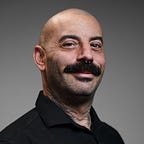A response to statements made by BC Chief Coroner.
B.C. Chief Coroner Lisa Lapointe gave an update on the Illicit Substance Overdose Crisis public health emergency on Wednesday, January 24th, stating Fentanyl remained a significant factor in the over 2,500 overdose or toxic drug poisoning deaths in British Columbia last year. She said that the potent opioid has been found in 86% of deaths annually between 2017 and 2023, and more than 14000 people have died since the crisis was announced. Experts in the province estimate that some 225,000 people presently use substances of some variety in BC.
Lapointe was also quick to say, “It deeply saddens me that we have been unable to influence the essential change necessary to reduce the tragic impacts of toxic drugs on so many thousands of our family members, friends and colleagues across the province…”
As Canada’s largest non-profit addiction treatment centre with more than 310 beds across our primary care programs and sober living residences where people can stay up to a year, we witness people at every stage of their recovery journey. People walking through the doors on day zero of their sobriety ready to make a change, people in our aftercare program receiving ongoing support as they transition back to living in their home communities, and the alumni who send us their milestones to share on social media weekly, some over 25 years of sobriety.
In 2023, we had 1043 admissions into our primary care programs. That is 1043 people who decided that they were ready and deserving of a life free from addiction. What does that look like, broken down to a daily level? Today, February 1st, we have 140 individuals in our primary care program, 154 in our supportive environment Sober Living Residences, and 38 people receiving aftercare case management and counselling at home after completing their primary treatment journey. All those individuals are making effective changes in their lives, and these people are no longer accessing tainted drug supplies.
Sadly, there are no quantifiable statistics for persons in long-term recovery from substance use as this is something not gathered by our government. Perhaps the Minister for Mental Health and Addictions could ask the questions “Are you a person in recovery from addiction? Did you access Addiction Treatment at a Treatment Centre? How many years of sobriety do you have currently?” be added to the next census or send it on its own as a direct mailout. As a person in recovery, I would respond to this if I got it in my mail, and it would certainly provide some much-needed statistics on the subject.
Together We Can’s programs are reviewed and approved by masters-level clinical therapists, and residents can access various therapy models, including DBT and CBT, and a team of counsellors and clinical therapists to help address their mental health concerns. We are Canada’s only non-profit addiction treatment centre with an on-site medical clinic and pharmacy to care for our residents’ medical needs throughout their entire stay, reducing the strain on an overtaxed healthcare system where many people in British Columbia can’t find a family doctor, as well as providing medically supervised detox and withdrawal management.
Our large number of primary treatment beds include some that are contracted out for immediate barrier-free intake by Providence Health’s Road to Recovery Program, BC Women’s Hospital for the partners of the women in the Families in Recovery Program, and 16 beds that are managed by Vancouver Coastal Health’s Central Addiction Intake Team program. If these healthcare providers can see the value of addiction treatment, BC’s Chief Coroner should also acknowledge it.
When provincial leaders don’t recognize that addiction treatment saves lives and people do recover, it does the public a disservice. We must convey all the facts and discuss every method to support those who use substances equally. Whether a person’s journey is linear or not, all pieces, from prevention to harm reduction to safe supply to abstinence, should be equally accessible. To say that safe supply is the only way to save lives is not based in fact.
To infer that evidence-based treatment doesn’t influence essential change to reduce the effects of toxic drugs is alarming. Frankly, the statement that the province is “making announcements that don’t actually make a material difference in people’s lives” is incorrect. Each of the recovery beds announced makes a substantial difference in the life of a person who is ready to recover from their substance use. One of the most significant barriers to addiction treatment is the cost involved in providing quality care. Any private pay bed that becomes funded by the province can help four people a year access services for free.
Premier Eby says the BC government’s ”vision is that no person should have to wait for detox.” “No person should have to wait for treatment.” The staff at Together We Can wholeheartedly agree. By increasing bed conversions, we could reduce our current waitlist for a funded bed to a near-zero wait for intake.
We are just one of many addiction treatment centres that serve British Columbia, and many have similar stories. We all work to rebuild the lives of our most at-risk populations, heal families from the despair of their loved ones’ addiction, and strengthen our communities when we recover from substance misuse.
Together We Can Alcohol & Drug Recovery & Education Society, based in Vancouver, British Columbia, offers information, education, and treatment services in the lower mainland. Services include spousal and family support, workplace education, detoxification, outpatient counselling, opioid dependency programs, and residential treatment. Together We Can has counsellors and therapists with specific training in addiction issues.
For more information, please call 1–888–940–9854.
